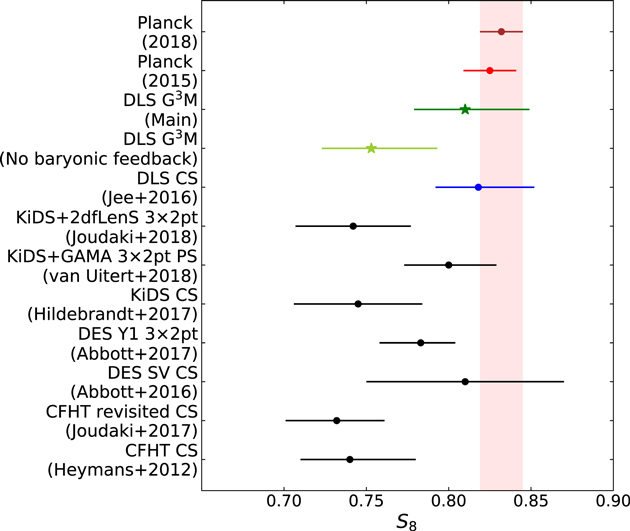- 제목
- Constraints on Cosmology and Baryonic Feedback with the Deep Lens Survey Using Galaxy–Galaxy and Galaxy–Mass Power Spect
- 작성일
- 2019.04.11
- 작성자
- 천문우주학과
- 게시글 내용
-
Constraints on Cosmology and Baryonic Feedback with the Deep Lens Survey Using Galaxy–Galaxy and Galaxy–Mass Power Spectra
Authors: Yoon, Mijin; Jee, M. James; Tyson, J. Anthony; Schmidt, Samuel; Wittman, David; Choi, Ami
Publication: The Astrophysical Journal, Volume 870, Number 2, 2019 January 15
Introduction (Kor): DLS 서베이를 활용한 우주론과 바리온 피드백 변수의 결정
Introduction (Eng):We present cosmological parameter measurements from the Deep Lens Survey (DLS) using galaxy-mass and galaxy-galaxy power spectra in the multipole range ℓ=250∼2000. We measure galaxy-galaxy power spectra from two lens bins centered at z∼0.27 and 0.54 and galaxy-mass power spectra by cross-correlating the positions of galaxies in these two lens bins with galaxy shapes in two source bins centered at z∼0.64 and 1.1. We marginalize over a baryonic feedback process using a single-parameter representation and a sum of neutrino masses, as well as photometric redshift and shear calibration systematic uncertainties. For a flat ΛCDM cosmology, we determine S8=0.810+0.039−0.031, in good agreement with our previous DLS cosmic shear and the Planck Cosmic Microwave Background (CMB) measurements. Without the baryonic feedback marginalization, S8 decreases by ∼0.05 because the dark matter-only power spectrum lacks the suppression at the highest ℓ's due to Active Galactic Nuclei (AGN) feedback. Together with the Planck CMB measurement, we constrain the baryonic feedback parameter to Abaryon=1.07+0.31−0.39, which suggests an interesting possibility that the actual AGN feedback might be stronger than the recipe used in the OWLS simulations. The interpretation is limited by the validity of the baryonic feedback simulation and the one-parameter representation of the effect.

- 저자명
